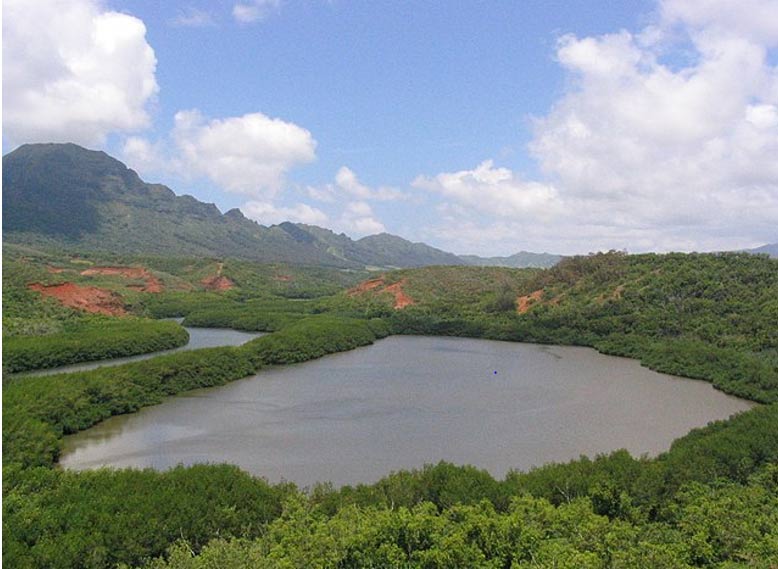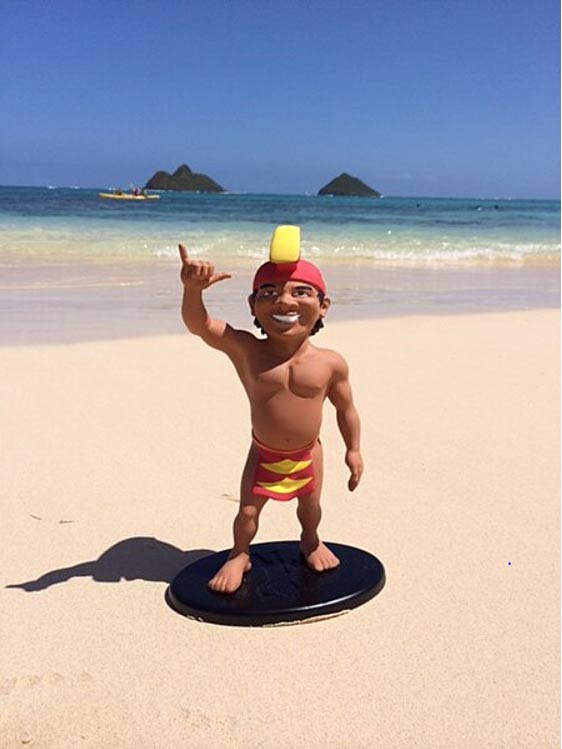Deep within the lush forests and secluded valleys of the Hawaiian Islands exists a fascinating piece of folklore. Islanders still talk of the Menehune, a mysterious race of little people remembered for their incredible craftsmanship and secretive natures. This diminutive clan of beings, often described in native Hawaiian mythology, are said to possess amazing skills, capable of building complex structures overnight and living hidden from the eyes of modern man. The tales of the Menehune not only enrich Hawaii’s cultural heritage but also invite curiosity about their origins and the possible truths behind these age-old stories.
Tales of the Menehune – Who Are They?
The Menehune are legendary figures originating from Hawaiian mythology. They are usually depicted as being small, dwarf-like beings gifted with extraordinary abilities. According to legendary accounts, the Menehune stand between 2 to 3 feet, (around 1 m) tall and are typically portrayed as having a robust, stocky build. Despite their small stature and bulky frames, they are said to be extremely agile and surprisingly strong. It’s also said that they have dark skin, large eyes, and bushy eyebrows, features that supposedly give them exceptional vision at night.

In Hawaiian folklore, the Menehune are celebrated for their incredible craftsmanship. They’ve been credited with creating intricate fishponds, temples known as heiau, roads, and other ancient stone structures overnight. The most famous example of these structures is the Menehune Fishpond, or Alekoko Fishpond, which can be found on the island of Kauai. According to local folklore, the little people built it in a single night.
The Menehune might be industrious, but it isn’t all work, no play. They are often depicted as being mischievous and playful, with a habit of playing pranks and tricks on unsuspecting human islanders. Their secretive nature, combined with their magical abilities, has made them a central figure in much Hawaiian folklore.
Like similar entries in the folklore of other cultures, the Menehune evoke both admiration and fear. They are respected as helpful builders but also feared as tricksters who can either assist or hinder those who cross them. This dual nature adds a layer of complexity to their character, making the Menehune a fascinating subject in Hawaiian mythology.
Where Can They Be Found?
According to local folklore, the Menehune inhabit the most remote and hard-to-reach areas of the Hawaiian Islands, favoring the dense forests and deep valleys in particular. Their homes are described as being located in places where people struggle to reach them, like the most overgrown regions of Kauai, the oldest Hawaiian island. These secluded habitats help maintain their mysterious and elusive nature, reinforcing the legend that they live apart from human society.

Their preference for isolation in Hawaii’s rugged terrain symbolizes their desire to remain hidden from the prying eyes of modern civilization, ensuring that their world remains a secret. This seclusion not only adds to their mystique but also plays a crucial role in preserving the purity of their mythical existence within Hawaiian culture.
What Traditions Do They Come From?
Tales of the Menehune are deeply rooted in Hawaiian mythology. Legends of the Menehune have been passed down through oral tradition for generations, serving as a means of preserving the values, beliefs, and historical narratives of native Hawaiians.
Much like Polynesian traditions, Hawaiian mythology is filled with stories of mighty gods, demigods, and countless mythical beings used to explain natural phenomena, social customs, and the very origins of the islands themselves. The Menehune are a prominent part of this mythological landscape, often depicted as industrious and magical creatures whose skills surpass those of ordinary humans.
Traditionally, tales of the Menehune were passed down by elders to younger generations, often during gatherings or around fires. Stories like these were used to embed moral lessons and cultural knowledge, as well as respect for the local environment. These stories highlight the importance of respect for nature, the value of hard work, and the need for cooperation within the community—values that are central to Hawaiian culture.
The Menehune’s nocturnal activities, such as building fishponds, heiau (temples), and other significant structures, are symbolic of their contribution to society. These legends celebrate their craftsmanship and ingenuity, which were crucial for the survival and prosperity of early Hawaiian communities. The Alekoko Fishpond is one such example, believed to have been constructed by the Menehune to support the local population by providing a reliable source of fish.
The duality of the Menehune is also typical of many Polynesian myths. Deities and mythical beings often possess both benevolent and malevolent traits encouraging a love and respect for nature. The Menehune may help people through their constructions but anger them at your own peril.

Theories on Origins
The origins of the Menehune are a subject of much debate and speculation, with several intriguing theories attempting to explain their place in Hawaiian mythology and history.
1. Ancient Inhabitants Theory
Perhaps the most popular theory suggests that the stories of the Menehune are based on a real group who lived on the islands before the arrival of the Polynesians who later became native Hawaiians.
According to this idea, the Menehune were a smaller, perhaps distinct group of people/ hominids who settled on the islands long before and were either displaced or absorbed by subsequent arrivals. Archaeological evidence pointing to early settlers of shorter stature supports this hypothesis, suggesting a historical basis for the legends.
2. Mythological Explanation
Or it could be that the Menehune are a purely mythological creation, a product of Hawaiian imagination designed to explain the presence of ancient, mysterious structures scattered across the islands.
The stories could have been crafted to explain the impressive feats of engineering and construction achieved by early Hawaiians, attributing them to magical beings rather than human effort. This aligns with similar myths found in other cultures, where little people or supernatural beings are credited with unexplained architectural marvels.
3. Cultural Symbolism
A third perspective views the Menehune as symbolic representations rather than literal beings. They might embody cultural ideals such as industriousness, craftsmanship, and a connection to nature.
By attributing exceptional abilities to the Menehune, Hawaiian folklore emphasizes values like hard work and cooperation, using these mythical beings to impart moral lessons and cultural values to successive generations.
While these theories vary in their approach, they collectively highlight the richness of Hawaiian mythology and the importance of the Menehune in cultural storytelling. Whether viewed as historical figures, mythical beings, or cultural symbols, the Menehune continue to captivate and inspire, reflecting the enduring power of folklore in shaping human understanding and imagination.

Conclusion
With their mysterious presence and amazing gifts, the Menehune are an integral part of Hawaii’s rich cultural history. These mythical little people, famed for their craftsmanship and playful mischief, embody the values and traditions of ancient Hawaiian society.
Through tales passed down through generations, the Menehune continue to fascinate and inspire, serving as a bridge between Hawaii’s past and present. Whether considered ancient inhabitants, symbolic figures, or purely mythical beings, the Menehune remain a testament to the enduring power of folklore in capturing the imagination and preserving cultural heritage.
Top image: Painting of a Menehune or the first Hawaiian people from 1933 by D. Howard Hitchcock. Source: Public Domain